TOP 5 TAKKAR NEWS OF THE DAY (2nd FEBRUARY 2023)
HEALTH ISSUES
1. WHAT IS SICKLE CELL ANEMIA?
TAGS: PRELIMS PERSPECTIVE- GS-II-HEALTH ISSUES
THE CONTEXT: Union Finance Minister recently announced the Central Government’s plan to launch a mission to eliminate sickle cell anemia by 2047.
THE EXPLANATION:
About Sickle cell anemia: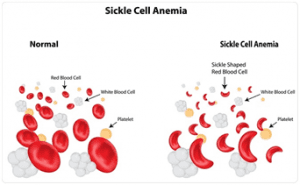
- It is an inherited blood disorder.
- It affects hemoglobin, the molecule in red blood cells that delivers oxygen to cells throughout the body.
- People with this disease have atypical hemoglobin molecules called hemoglobin S, which can distort red blood cells into a sickle, or crescent, shape.
- These sickle cells also become rigid and sticky, which can slow or block blood flow.
What causes it?
- The cause of Sickle cell disease is a defective gene, called a sickle cell gene.
- A person will be born with sickle cell disease only if two genes are inherited—one from the mother and one from the father.
Symptoms:
- Early stage: Extreme tiredness or fussiness from anemia, painfully swollen hands and feet, and jaundice.
- Later stage: Severe pain, anemia, organ damage, and infections.
Treatments:
- The only cure for this disease is bone marrow or stem cell transplantation.
- However, there are treatments that can help relieve symptoms, lessen complications, and prolong life.
ENVIRONMENT, ECOLOGY & CLIMATE CHANGE
2. HEIMANG TREE
TAGS: PRELIMS PERSPECTIVE- GS-III-ENVIRONMENT
THE CONTEXT: Despite recent studies highlighting the Heimang’s remarkable adaptability, it hasn’t yet been used much in commerce.
THE EXPLANATION:
ABOUT HEIMANG
- The Heimang tree grows widely in Manipur and other north-eastern regions
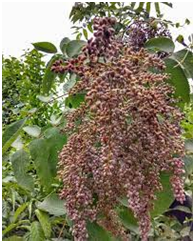
- Its fruit have a citrus-like tartness and, it is packed with nutrients such as polyphenols, flavonoids, and antioxidants.
- Traditional healers of Manipur called Maibas or maibis, prescribe heimang for common gastrointestinal problems like diarrhoea and dysentery.
- It is also recommended to eat water-soaked fruit for indigestion and stomach ulcer.
- The research found that compounds isolated from the stem of the heimang tree can significantly suppress HIV-1 activity in vitro.
- Local communities in the state also use heimang leaves to prepare a herbal shampoo called chinghi by boiling them with rice water.
3. RED-HEADED VULTURE
TAGS: PRELIMS PERSPECTIVE- GS-III-ENVIRONMENT
THE CONTEXT: Recently, The Red-headed vulture was spotted in the Asola Bhatti Wildlife Sanctuary.
THE EXPLANATION: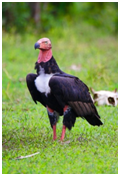
About Red-headed vulture
- This is one of the 9 species of Vulture which are found in India
- It is also called the Asian King vulture or Pondicherry Vulture was extensively found in India but its numbers drastically reduced after diclofenac poisoning.
- Conservation status
- IUCN Red List: Critically Endangered
- Wildlife Protection Act, 1972: Schedule 1
ABOUT THE ASOLA BHATTI WILDLIFE SANCTUARY
- It is located on the Southern Delhi Ridge of the Aravalli hill range on the Delhi-Haryana border and in Southern Delhi as well as northern parts of the Faridabad and Gurugram districts of Haryana.
- It is at the end of an important wildlife corridor that starts from Sariska National Park in Alwar, Rajasthan.
- Flora: Wide variety of trees, shrubs, herbs and grasses.
- Fauna: A large number of mammals, reptiles, amphibians, butterflies and dragonflies.
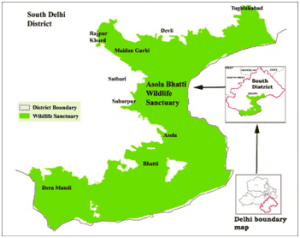
SCIENCE AND TECHNOLOGY
4. CAESIUM-137
TAGS: PRELIMS PERSPECTIVE- GS-III-SCIENCE AND TECHNOLOGY
THE CONTEXT: Recently, a Caesium-137 capsule lost in transit was discovered in Western Australia using specialised detection equipment that detected radiation.
THE EXPLANATION:
What is Caesium?
- Caesium is a soft, flexible, silvery-white metal.
- It becomes liquid near room temperature, but easily bonds with chlorides to create a crystalline powder.
About the Caesium-137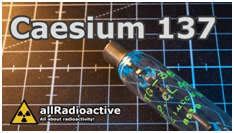
- It is the most common radioactive form of caesium.
- It is produced by nuclear fission which is also one of the byproducts of nuclear fission processes in nuclear reactors and nuclear weapons testing.
- This radioactive metal has a half-life of 30.05 years – meaning in three decades it will have half of its original activity.
- Caesium-137 can cause serious illness when touched, leading to burns and acute radiation sickness.
- External exposure can increase the risk of cancer because of the presence of high-energy beta-gamma radiation. Prolonged exposure can even cause death.
- Internal exposure to it through ingestion or inhalation allows the radioactive material to be distributed in the soft tissues, especially muscle tissue, which increases cancer risk.
ECONOMIC DEVELOPMENTS
5. WHAT IS THE ‘MAHILA SAMMAN SAVING CERTIFICATE’ SCHEME?
TAGS: PRELIMS PERSPECTIVE- GS-II—ECONOMY-SCHEMES IN NEWS
THE CONTEXT: Finance Minister recently announced a new saving scheme ‘Mahila Samman Saving Certificate’ for women and girls in the Union Budget.
THE EXPLANATION:
About Mahila Samman Saving Certificate’ Scheme:
- The scheme offers deposit facility up to Rs 2 lakh in the name of women or girls for a tenor of 2 years.
- It offers fixed interest rate of 7.5 per cent.
- There are no tax benefits, but partial withdrawal is allowed in this scheme.
- This is a one-time scheme announced in Budget 2023 and will remain available for a two-year period i.e. up to March 2025.
- Benefit: It will encourage more women to adopt formal financial saving instruments.
Difference between Mahila Samman Saving Certificate and Sukanya Samriddhi Yojana
- The Sukanya Samriddhi Scheme is a small deposit scheme of the government of India meant exclusively for a girl child. The scheme is meant to meet the education and marriage expenses of a girl child.
- The current rate of interest offered by Sukanya Samriddhi Yojana is 7.6%, which is compounded annually.
- Account can be opened in the name of a girl child till she attains the age of 10 years.
- The total amount deposited in an account shall not exceed Rs 1,50,000 in a financial year.
- Sukanya Samriddhi scheme has tax benefits under Section 80C.
- The account matures after 21 years from the date of opening or on marriage of the girl child under whose name the account is opened, whichever is earlier.